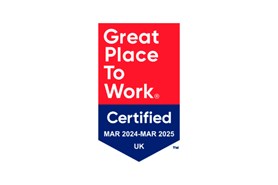UK construction is embattled. Growth is eluding us, barricaded behind an obstacle course of ongoing economic challenges, rising global tensions and an imminent General Election.
Risky business
The convergence of all these factors results in a difficult present and rather unpredictable future.
In Gleeds’ latest Market Report, we saw that this persistent volatility is taking its toll, with 89% of contractors telling us that they or their supply chain had declined a tender over the first quarter of 2024.
This mirrors what we’ve seen in previous surveys, but what was rather more surprising was hearing about the knock-on effect - that almost 40% of those we quizzed had struggled to secure enough tenderers for projects over the same period.
Anecdotal evidence suggests that projects that might have attracted three or four bids previously now find themselves faced with just one in some instances, and it seems that this narrowing of options is becoming increasingly common. This is bound to affect prices as the shorter the list of suppliers, the more of a premium those prepared to take on work will charge. Supply and demand economics at its basic level.
The instability in the market is denting confidence, many contractors are choosing to downsize and the excessive rate of insolvencies we’ve seen continues to reduce capacity and affect businesses’ perception of risk. There is a growing reluctance amongst contractors and sub-contractors to commit to schemes that don’t tick all their boxes and a far greater willingness than I’ve seen before to walk away.
Respondents to our survey echo that fact, telling us that companies are becoming more selective, focusing on the schemes they know they have the capacity to deliver and often avoiding large, complex agreements where prices are fixed and fluctuations in the market threaten to hit already squeezed margins.
One person said, “While an iconic project can make a good case study, it is easier to build a few simpler schemes without the risk profile and make more money”. You can’t argue with that and the recent debacle over the much delayed Co-op Live arena project in Manchester has shown the damage a high profile, high risk scheme can have both on brand equity and bottom line.
Skills in short supply
Perhaps part of the issue is that, while we found the availability of labour overall to be less of a concern in Q1, trouble is brewing in some sub-sects. A dwindling skilled workforce is making it difficult to find operatives to undertake existing workloads, with M&E workers particularly thin on the ground. Groundwork trades, bricklayers and carpenters are also in short supply, and we’re now hearing reports that attracting people into professional roles like M&E engineering, surveying, health and safety, and even landscape architecture is becoming a challenge.
In a bid to beat the system and secure all important labour for their builds, some contractors have reportedly taken to booking workers in well before they’re needed which causes more problems than it solves when delays to programmes leave them twiddling their thumbs and still in need of recompense for time wasted.
I fully expect the skills shortage to become a more pressing concern as time goes on. We know that the industry is haemorrhaging people and needs an additional 50,000 workers a year to keep up with demand according to the CITB’s latest figures.
Unfortunately, two-thirds of our survey respondents don’t believe it can be done. They told us that they don’t feel enough is happening to make construction more appealing to school leavers, and many felt that if we were to stand any chance of plugging the gap we’d need a significant injection of overseas labour – a solution made more complicated in post-Brexit Britain.
Opportunity knocks
Nevertheless, amid the gloom, there are indications of a gradual improvement in the overall outlook, and I always look on the bright side. Although 21% of our 2Q 2024 respondents identified interest rates and inflation as the biggest threat to the industry at the minute, this was down from the 35% who said it was the biggest concern in our last survey which took place over the winter.
There’s also anecdotal evidence suggesting a resurgence in projects previously on hold, buoyed by expectations of lower interest rates later in the year. Other industry data corroborates this shift, like improved expectations metrics and a rise in client enquiries across infrastructure, residential and commercial sectors evidenced by the Q1 RICS UK Construction Monitor.
The Construction Products Association predicts a return to modest growth for 2025 and more stable expansion in 2026, so let’s use this time to get ready for the anticipated upturn. Let’s take on board the concerns of the supply chain and make sure we’re taking a collaborative approach to project delivery that works for all, and let’s ensure we’ve got a talent pool to draw upon so that when the current obstacles blocking the path to success are removed, we don’t find that we are the ones standing in the way, metaphorically tripping over our own feet.
First published on New Civil Engineer on 4th June 2024

Graham Harle
Chief Executive Officer
- graham.harle@gleeds.com
- +44 (0)207 631 7000



